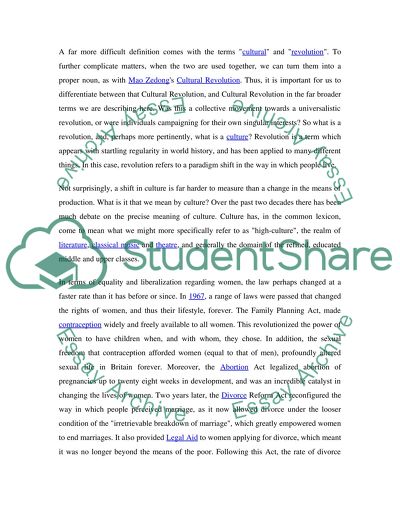Cite this document
(Cultural Revolution in Education Case Study Example | Topics and Well Written Essays - 2250 words, n.d.)
Cultural Revolution in Education Case Study Example | Topics and Well Written Essays - 2250 words. Retrieved from https://studentshare.org/education/1542970-discuss-the-impact-on-british-society-of-the-cultural-revolution-of-the-1960s
Cultural Revolution in Education Case Study Example | Topics and Well Written Essays - 2250 words. Retrieved from https://studentshare.org/education/1542970-discuss-the-impact-on-british-society-of-the-cultural-revolution-of-the-1960s
(Cultural Revolution in Education Case Study Example | Topics and Well Written Essays - 2250 Words)
Cultural Revolution in Education Case Study Example | Topics and Well Written Essays - 2250 Words. https://studentshare.org/education/1542970-discuss-the-impact-on-british-society-of-the-cultural-revolution-of-the-1960s.
Cultural Revolution in Education Case Study Example | Topics and Well Written Essays - 2250 Words. https://studentshare.org/education/1542970-discuss-the-impact-on-british-society-of-the-cultural-revolution-of-the-1960s.
“Cultural Revolution in Education Case Study Example | Topics and Well Written Essays - 2250 Words”. https://studentshare.org/education/1542970-discuss-the-impact-on-british-society-of-the-cultural-revolution-of-the-1960s.


